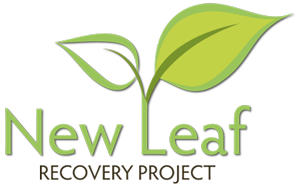Managing Cravings When They Hit
When a craving suddenly hits it can feel very out of the blue and even disheartening, especially if you’ve been making steady progress with your recovery. For many, knowing how to deal with these cravings can be difficult.
Cravings are a very real phenomenon. While many people won’t think twice before giving in to their sudden need for a biscuit, this scenario is very different for an ex-addict with the sudden urge for their previous drug of choice.
Unfortunately, urges to use are a very common part of life in recovery. Learning to manage these cravings is a vital tool that you can use on your journey. So how do you deal with cravings when they hit? And how can you continue to manage them in the long term?

What Exactly Is a Craving?
If you’re struggling with cravings, the first step is understanding what exactly this phenomenon is and why it affects us. If we can understand a craving, and where they come from, then we can rationalise them. This then builds the habit of not giving in to the urge to use. This process is just like building a muscle, but instead, you’re building mental resilience.
A craving is a dynamic thing that can have peaks, valleys, and extreme spikes during any given day. The technical definition of a craving is a directed, conscious expression of desire. Although, there is also potential for the existence of unconscious or compulsive cravings.
Your experience of cravings may vary in strength, frequency, and duration in a pattern that is unique to you. These factors are often linked to your ‘drug motivation’ or triggers. You can become more aware of your cravings by taking notice of what happens before or whenever they seem to appear.
Coping Methods for Cravings
When it comes to cravings, everyone has a different method that works for them. Plus, what works for you one day may not work the next. This is why it’s important to arm yourself with a whole host of coping mechanisms so that, when the time comes, you’re ready to take on your cravings.
In the Present Moment
If you’re really struggling or are new to managing your urge to use, a short-term solution may be useful to take you out of the moment and away from the craving. Short-term coping methods may include:
Distraction Techniques
- Focusing on your breathing or meditation.
- Sip a hot drink, and really pay attention to the feeling as you drink it.
- Exercise, including walking away from the situation.
- Listening to music or watching your favourite TV show.
- Doodling, colouring, painting, or anything else creative!
- Knitting, baking, or other crafts that keep your hands and mind busy.
- Get outside! Nature is so good for us, and yet we don’t spend enough time in it.
Asking for Help or Contacting Rehabs
There is no shame in asking for help on your road to recovery, especially when you’re struggling. We always recommend building a support system for yourself wherever possible. You could:
- Talk to relatives or loved ones.
- Arrange to meet up with friends.
- Go to your local support group.
- Call a helpline.
- Get in touch with rehabs like New Leaf Recovery!
You may also find it useful for your long-term recovery to consciously take note of your situation when the craving appears - there may be a link. Once you recognise the reasons behind your urge to use, this trigger may become easier to manage.
Preventing Cravings in the Future
However, it’s important to not solely rely on short-term methods as your crutch against cravings. If you want to reduce the strength, frequency, or duration of your urge to use, you’ll put in the work and continue dedicating both time and effort to your recovery.
Long term coping methods may include:
- Refusing to let the thought of using turn into a feeling – cutting off the craving before it even starts.
- Being in the moment, recognising the feeling, and then letting it go.
- Building your support system for times when you’re struggling.
- Finding things that bring you joy and putting time into them.
- Recognising that this moment isn’t forever.
With time, these long-term methods can become more beneficial to you for preventing or reducing cravings in the future. But know that short-term methods will still be there if you’re in a pinch.
e of your situation when the craving appears - there may be a link. Once you recognise the reasons behind your urge to use, this trigger may become easier to manage.
Recovery Isn’t Linear: Don’t Stop Moving Forwards!
In an ideal world, once in recovery, the urge to use would disappear and you would never face temptation. Unfortunately, this isn’t realistic, and cravings do happen. No matter how far along you are in your recovery, you can still be triggered and experience the urge to use.
But what you do at that moment can make all the difference. Don’t take your urge to use as a sign of failure. Instead, take it as your chance to further commit to your recovery and keep moving forwards.
Avoiding noticed triggers whenever possible and maintaining your mental health can work together with activities or other coping methods to keep you focused on the present moment, while a craving is working to pull you into the past.
Laying a good foundation and developing a range of tools to manage your urge to use can support you in your recovery and may even minimise your cravings. If you need help building a foundation for your recovery, get in touch with rehabs like New Leaf Recovery today – we understand.

